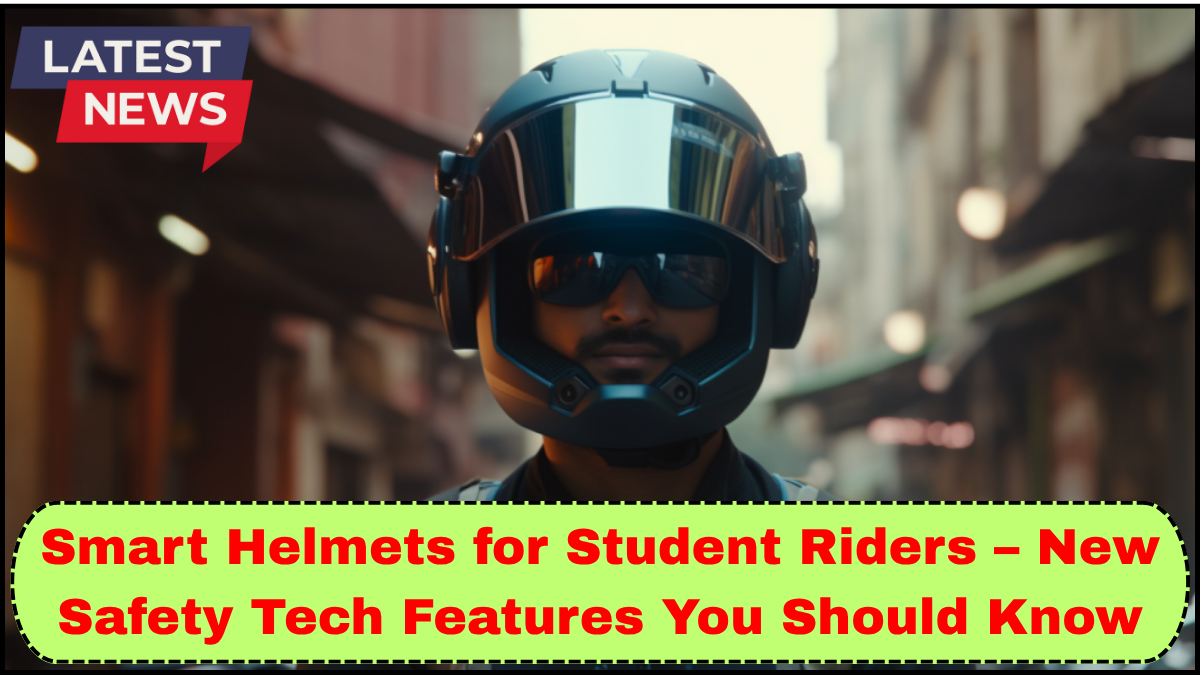As student mobility increases, especially in urban and suburban areas, more kids and teens are commuting on bikes, e-bikes, and scooters. With this shift, smart helmets for school commuters are emerging as a crucial safety measure. These aren’t your ordinary helmets. They’re equipped with cutting-edge technology designed to protect, guide, and connect student riders like never before.

What Are Smart Helmets?
Smart helmets are advanced safety devices integrated with electronic systems to enhance the user’s safety and riding experience. Unlike standard helmets that offer only physical protection, tech-enabled helmets combine sensors, connectivity, and real-time data to provide proactive safety features. For school commuters, especially those navigating traffic-heavy areas, these innovations can be life-saving.
Key Safety Features in Smart Helmets for School Commuters
1. Built-in Communication Systems
Smart helmets now come with Bluetooth intercoms and hands-free calling. This allows students to stay connected with their parents or guardians without having to take their hands off the handlebars or their eyes off the road. Some models even support voice assistants, so students can get navigation updates or send a message with simple voice commands.
2. Integrated GPS Tracking
Parental peace of mind is one of the driving forces behind GPS-enabled helmets. Real-time location tracking means guardians can monitor their child’s route and receive alerts if something seems off. If a student goes off the designated route or there’s an unexpected stop, notifications can be sent immediately.
3. Crash Detection and Emergency Alerts
Advanced smart helmets feature built-in accelerometers and gyroscopes that detect sudden impacts. If a crash is detected, the helmet can automatically send out an SOS message to emergency contacts, along with the GPS location. This is especially crucial when student riders are traveling alone.
4. Rearview Cameras and Blind Spot Detection
Some tech-enabled helmets are now equipped with small rearview cameras and sensors that alert the rider if a vehicle enters their blind spot. This gives young commuters an extra layer of awareness, helping them avoid potential accidents caused by vehicles approaching from behind.
5. LED Signal Lights and Brake Indicators
Visibility is a major concern for student riders, especially during early morning or late afternoon commutes. Smart helmets with integrated LED lights offer turn signals and brake indicators that sync with handlebar-mounted controllers. These features ensure that surrounding drivers are aware of the rider’s intentions, reducing the chances of collisions.
Why Smart Helmets Matter for School Commuters
Children and teens may not always have the same level of road awareness as adults. Smart helmets for school commuters bridge that gap by providing technological assistance that enhances situational awareness, communication, and emergency responsiveness. Moreover, these helmets promote responsible riding behavior by encouraging helmet use through added functionality.
With distracted driving on the rise and urban traffic becoming more unpredictable, these smart safety devices can make a significant difference in preventing injuries and even saving lives.
Choosing the Right Smart Helmet
When selecting a smart helmet for a student, consider the following factors:
- Fit and Comfort: Ensure the helmet fits snugly and comfortably to encourage consistent use.
- Battery Life: Look for helmets with long battery life or fast-charging options, especially if GPS and lights are used daily.
- Durability: Helmets should meet safety certification standards and be built to withstand daily wear.
- User Interface: Simplicity is key. The helmet’s features should be easy for a child or teen to use without distraction.
Future Developments in Smart Helmet Technology
The future of smart helmets holds even more promise. Upcoming models may integrate air filtration for polluted environments, AI-assisted navigation, and automated parental notifications based on ride analytics. As more students adopt eco-friendly commuting habits, these helmets will play an increasingly important role in keeping them safe.
FAQs
Q: Are smart helmets suitable for younger children?
A: Yes, but always check for age-appropriate sizing and ensure the helmet is lightweight and easy to operate. Some models are designed specifically for younger riders.
Q: Do smart helmets require a data connection?
A: Not all features require a constant data connection. GPS tracking and emergency alerts may use cellular or Bluetooth, depending on the model.
Q: Are these helmets waterproof?
A: Most quality smart helmets are water-resistant and can handle light rain, but it’s important to check the IP rating for specific waterproofing levels.
Q: How often do smart helmets need charging?
A: Battery life varies by model and usage. On average, most smart helmets last between 8 to 20 hours on a full charge.
Q: Are smart helmets compatible with regular bikes and scooters?
A: Yes. Smart helmets are designed for use with bicycles, e-bikes, and electric scooters, making them versatile for school commuters.
click here to learn more